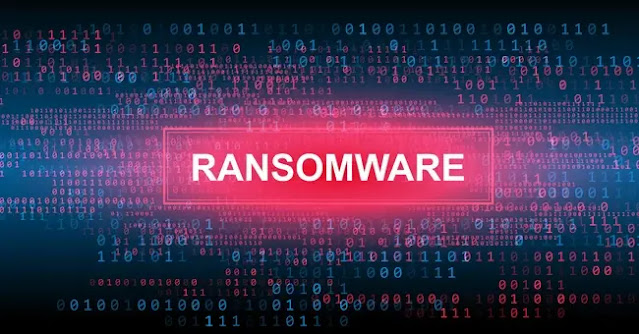Understanding Ransomware Attacks and How to Prevent Them
Ransomware attacks have rapidly emerged as one of the most devastating cyber threats faced by individuals, businesses, and even governments. These attacks not only lock critical data but also demand hefty ransoms for its release—making them both disruptive and financially draining. If you’re considering a Best Cyber Security Course in Bengaluru, understanding ransomware is a crucial part of your learning journey. This blog will take you through how ransomware works, the different types of attacks, real-world case studies, and most importantly—how to prevent them effectively.
What is Ransomware?
Ransomware is a type of malicious software (malware) that encrypts files or systems and demands a ransom payment from victims to restore access. Typically delivered via phishing emails, malicious downloads, or software vulnerabilities, ransomware locks you out of your own data until you pay the attacker—usually in cryptocurrency.
There are two main types:
-
Crypto ransomware: Encrypts important files, making them inaccessible without a decryption key.
-
Locker ransomware: Locks users out of their devices entirely, preventing any system access.
Both forms can cause serious damage, especially in healthcare, finance, and critical infrastructure industries.
How Ransomware Attacks Work
The lifecycle of a ransomware attack typically follows these stages:
-
Infiltration: The attacker gains initial access through phishing emails, unpatched software, or weak passwords.
-
Execution: Once inside, the malware runs a script to encrypt files or lock systems.
-
Demand: A ransom note is displayed, demanding payment in return for decryption keys.
-
Negotiation: In some cases, attackers may offer to decrypt a few files as proof, or lower the ransom amount.
-
Resolution: Victims may choose to pay (not recommended) or restore from backups if available.
Understanding each of these steps is vital to formulating a solid defense strategy.
Notable Ransomware Attacks
Ransomware attacks have been making headlines due to their impact:
-
WannaCry (2017): This attack hit over 200,000 computers in 150 countries using a vulnerability in Windows. Hospitals in the UK were among the hardest hit.
-
Colonial Pipeline (2021): A ransomware attack on this major U.S. fuel pipeline caused temporary gas shortages across the East Coast.
-
REvil and Maze: These gangs not only encrypted data but also threatened to leak sensitive information, adding an extra layer of pressure.
Such incidents show that ransomware is not just a tech issue—it’s a business and security crisis.
Who is at Risk?
While large enterprises often make headlines, anyone can be a victim:
-
Individuals: Especially those who click on suspicious links or download from untrusted sources.
-
Small Businesses: Often lack advanced cybersecurity defenses and become easy targets.
-
Large Enterprises: With complex systems and data, making them lucrative for attackers.
-
Educational and Healthcare Institutions: Frequently targeted due to the critical nature of their data and the urgency to restore operations.
No one is immune, which makes awareness and preparation essential.
How to Prevent Ransomware Attacks
Now that we know how ransomware works, here are practical steps to prevent it:
1. Regular Backups
Ensure that critical data is backed up regularly—both online and offline. Store these backups in locations disconnected from the main network.
2. Keep Software Updated
Patch all applications and operating systems to fix known vulnerabilities. Most ransomware exploits unpatched software.
3. Use Antivirus and Endpoint Protection
Invest in a good antivirus solution and make sure endpoint detection and response (EDR) systems are in place for real-time monitoring.
4. Enable Email Filters
Use spam filters to detect and quarantine phishing emails. Many ransomware attacks start with malicious attachments or links.
5. Implement Access Controls
Restrict file and system access based on user roles. Limit admin privileges to reduce potential attack surfaces.
6. Employee Training
Train employees to recognize phishing attacks, suspicious downloads, and unsafe websites. Human error is still the biggest entry point.
7. Multi-Factor Authentication (MFA)
Adding an extra layer of security via MFA can stop attackers even if they steal login credentials.
By following these preventive steps, you dramatically reduce the chances of becoming a ransomware victim.
Role of Cybersecurity Education
Combating modern threats like ransomware requires up-to-date skills and hands-on experience. Institutions like the Boston Institute of Analytics offer intensive, practical-oriented cybersecurity programs that teach how to identify, mitigate, and respond to ransomware attacks and other cyber threats.
Students learn incident response strategies, threat hunting, digital forensics, and vulnerability assessment—tools that are vital in defending against ransomware.
If you're an aspiring cybersecurity professional, enrolling in an Ethical Hacking Weekend Course in Bengaluru is an excellent way to gain real-world skills that are in demand. Ethical hacking techniques allow you to understand how attackers think and act, so you can stay one step ahead.
Conclusion
Ransomware attacks are becoming more sophisticated and frequent, posing a serious threat to personal, corporate, and national security. Whether you're an IT professional, a business owner, or just someone who values data privacy, understanding how these attacks operate—and how to prevent them—is non-negotiable.
The best defense starts with education. Whether you choose a foundational program or an advanced specialization, institutions like the Boston Institute of Analytics offer industry-relevant courses tailored for the current threat landscape. From understanding malware behavior to building secure infrastructures, their programs equip learners to lead the fight against ransomware and other cyber threats.
Investing in the right skills today can secure your data, your organization, and your future. Stay alert. Stay updated. Stay secure.




Comments
Post a Comment